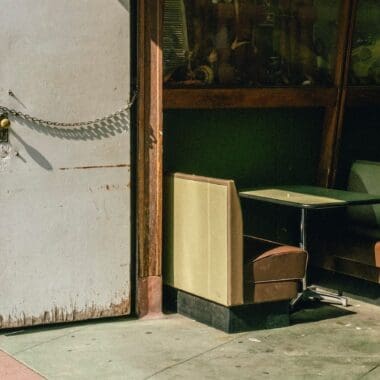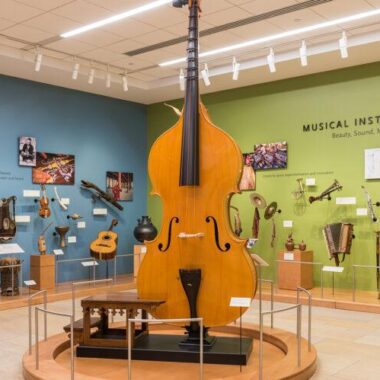Nestled in the heart of Los Angeles is a prehistoric wonder that continues to fascinate both young and old alike – the La Brea Tar Pits. Known for its bubbling asphalt and remarkable fossil discoveries, this Ice Age treasure trove offers a unique glimpse into ancient ecosystems. Recognizing the importance of educators in bringing this history to life, the La Brea Tar Pits have a special offer that makes exploring this site even more accessible for teachers.
Full disclosure: If you visit a link on this page and make a purchase, we may receive a small commission at no extra cost to you.
The La Brea Tar Pits serve as a living classroom, where the remains of saber-toothed cats, mammoths, and dire wolves offer a compelling window into the past. Visitors can watch as paleontologists carefully excavate and investigate Ice Age fossils right before their eyes at the active dig site, or explore the museum where these astonishing finds are on display. With ongoing research and interactive exhibits, the La Brea Tar Pits provide an educational experience that encourages curiosity, critical thinking, and a deeper appreciation for the natural world.
For teachers, the La Brea Tar Pits extend a warm invitation to explore this fascinating site at a discounted rate. By presenting a valid teacher ID at the ticket counter, educators can receive a reduced admission price. This discount makes it easier for teachers to immerse themselves in the wealth of knowledge and experience the wonder of the Tar Pits firsthand. Whether planning a future class field trip or indulging in a personal passion for science and history, the La Brea Tar Pits are an invaluable resource for educators to continue learning and find inspiration for their students.
Q&A
### **Q&A on La Brea Tar Pits**
**Q: What exactly are the La Brea Tar Pits?**
A: The La Brea Tar Pits are a group of natural asphalt lakes located in urban Los Angeles. These pits are renowned for preserving a treasure trove of fossilized remains of ancient plants and animals that lived during the last Ice Age.
**Q: How were the La Brea Tar Pits formed?**
A: The Tar Pits were formed thousands of years ago when crude oil seeped up through the Earth’s crust along the 6th Street Fault. As the lighter components of the oil evaporated, they left behind the thick, sticky asphalt.
**Q: Why are the Tar Pits significant?**
A: They are significant because they serve as a window into the past. The tar pits have trapped and preserved the skeletons of many extinct species, providing paleontologists with invaluable information about life in prehistoric times.
**Q: What kinds of fossils have been found at the La Brea Tar Pits?**
A: The fossil assemblage includes a wide range of Ice Age creatures such as the mammoth, saber-toothed cats, dire wolves, and ground sloths, as well as birds, insects, and plants.
**Q: Can visitors see excavations in progress at the La Brea Tar Pits?**
A: Yes, visitors can often watch paleontologists at work, particularly during the summer months when excavation projects are more frequent.
**Q: Is the La Brea Tar Pits Museum open to the public?**
A: Absolutely! The La Brea Tar Pits and Museum is a popular destination for both education and tourism. It showcases a wealth of fossils found in the pits and offers exhibits that explain the site’s geological and historical significance.
**Q: Have all the fossils been discovered at the La Brea Tar Pits?**
A: No, the exploration and excavation continue. It’s believed that countless specimens are still submerged in the tar, waiting to be uncovered and studied.
**Q: What kind of preservation efforts are in place for the Tar Pits?**
A: The Tar Pits are a protected site, and the museum and research teams work to ensure the preservation of fossils. Conservation efforts also include maintaining the asphalt and surrounding area to prevent contamination or degradation of the valuable paleontological resources.
**Q: How does the asphalt preserve the fossils so well?**
A: The thick, sticky nature of tar prevents decay and protects the remains from scavengers, bacteria, and the elements, which is why the fossils are so well-preserved.
**Q: Do the La Brea Tar Pits pose any danger to visitors?**
A: The pits are safely managed and the main areas of tar are fenced off to prevent accidents. Informational signage and museum docents help to ensure that visitors enjoy the pits safely.
**Q: Can community members get involved with the La Brea Tar Pits?**
A: Yes, the La Brea Tar Pits often offer volunteer programs, educational workshops, and community events to engage the public in paleontology and conservation.
**Q: Are there any recent significant discoveries at the site?**
A: As research continues, new findings are regularly made, shedding light on the biodiversity and ecology of the past. One recent example includes a well-preserved mammoth skull, providing further insights into these majestic Ice Age giants.






